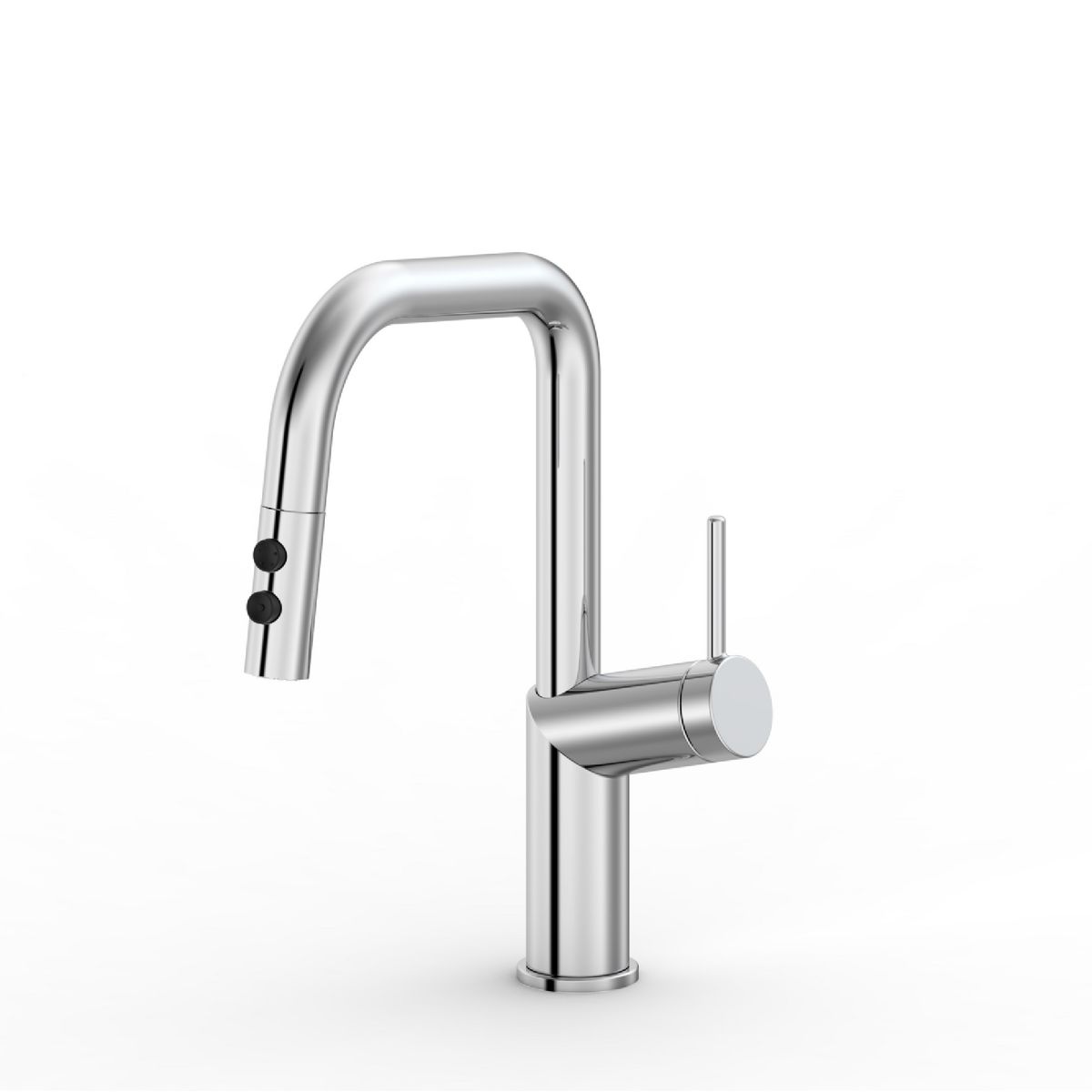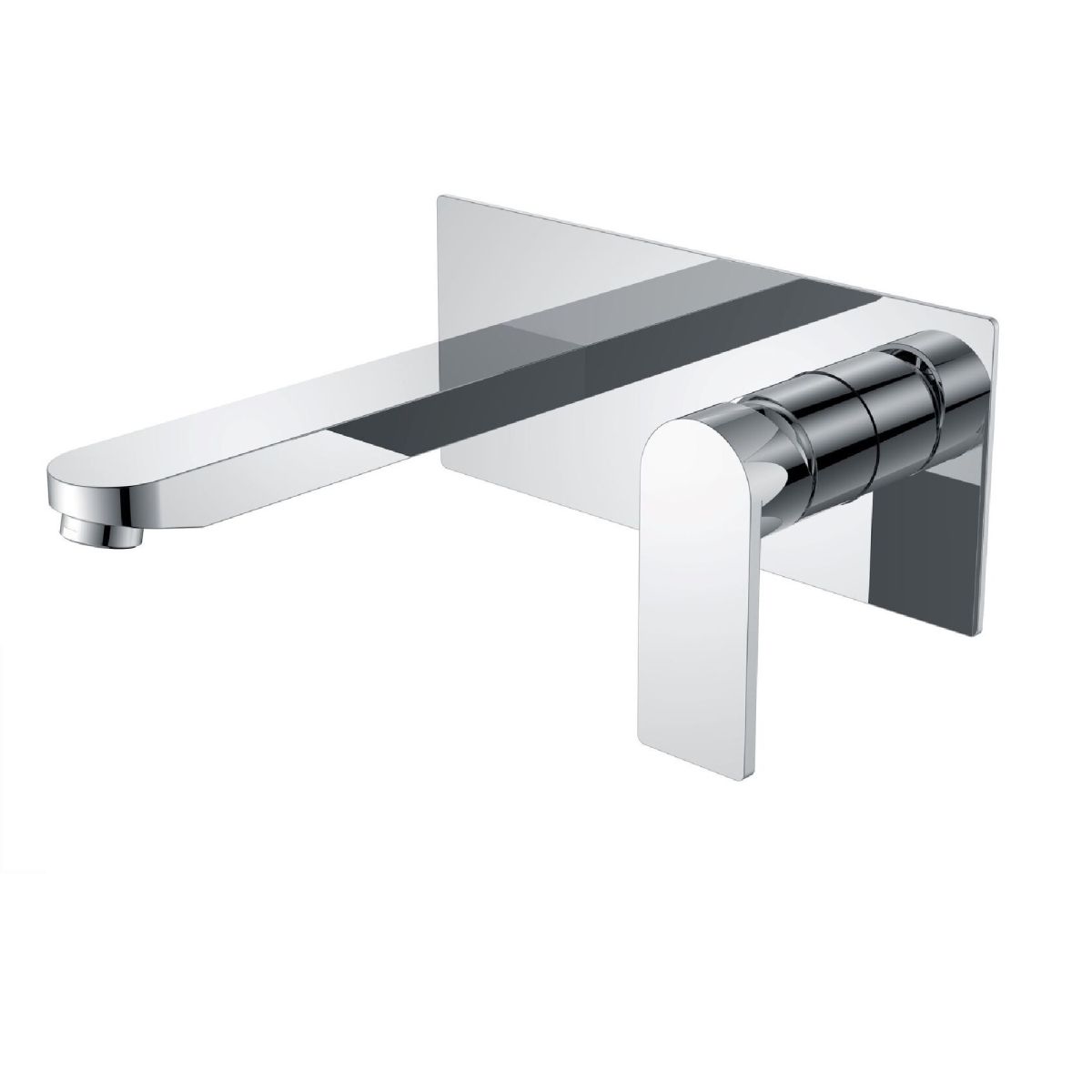Difference Between Kitchen and Bathroom Taps
Date Posted:9 November 2024
Choosing the right tap for your kitchen or bathroom involves understanding their unique features, functions, and designs. While both types of taps are essential fixtures in any home, they serve different purposes and have distinctive characteristics. In this guide, we’ll explore the key differences between kitchen and bathroom taps to help you select the best fit for each room.
-min.png)
1. Functional Differences: How Kitchen and Bathroom Taps Are Used
Kitchen Taps
Kitchen taps are often larger with higher arcs, designed for tasks like filling pots, washing dishes, and preparing food. These taps typically need a wide reach and height to accommodate larger items.
Bathroom Taps
Bathroom taps, on the other hand, are generally compact and designed for handwashing or quick rinsing. The focus here is on space efficiency and aesthetic appeal to suit smaller basins.
2. Types of Taps for Kitchens vs. Bathrooms: Finding the Right Style
Kitchen Tap Types
- Single-Lever Mixers: One-handle operation that allows you to control both flow and temperature, making them ideal for multitasking.
- Pull-Out Spray Taps: A versatile choice for rinsing dishes and cleaning around the sink, these taps come with a retractable hose.
- Touchless Taps: Sensor-based taps that provide a hygienic, hands-free experience.
Also Check: How to Choose the Perfect Tapware for Your Kitchen Sink

Bathroom Tap Types
- Dual-Lever Mixers: Classic two-handle design that allows precise control over hot and cold water, often suited for traditional or vintage bathrooms.
- Wall-Mounted Taps: These taps free up counter space and work well with vessel sinks, giving a modern, minimalist look.
- Single-Handle Taps: Compact and easy to use, these taps fit well in contemporary bathrooms.
Also Check: Choosing the Right Bathroom Tapware

3. Key Features to Consider for Kitchen and Bathroom Taps
Material and Finish
- Stainless Steel: Popular for kitchens due to its durability and resistance to rust, ideal for high-use areas.
- Chrome and Brass Finishes: Common in bathrooms for a polished look, though chrome may require more frequent cleaning.
- Matte Black and Brushed Nickel: Offer a stylish, modern look and hide water spots effectively, suitable for both kitchens and bathrooms.
Spout Height and Reach
- Kitchen Spouts: Higher spouts are preferred in kitchens to accommodate large pots and provide more workspace.
- Bathroom Spouts: Lower spouts help control splashing and maintain a balanced look, especially with smaller basins.
Water Efficiency
- Flow Control: Many taps in both kitchens and bathrooms now come with water-saving features, such as aerators, which maintain pressure while reducing water usage.
4. Style and Aesthetics: Matching Taps to Kitchen and Bathroom Designs
Modern and Minimalist
Streamlined taps with a sleek profile and finishes like matte black or stainless steel work well in both modern kitchens and bathrooms.
Traditional and Classic
Vintage-style taps in brass or chrome with dual handles suit classic kitchen and bathroom designs, adding character and elegance.
Industrial Style
For an industrial-inspired kitchen or bathroom, opt for bold, utilitarian designs with matte finishes and visible hardware.
5. Installation Types for Kitchen and Bathroom Taps
Deck-Mounted Taps
Installed on the sink or countertop, these taps are common in both rooms and are versatile for various styles.
Wall-Mounted Taps
These taps are increasingly popular in bathrooms, freeing up counter space and adding a modern touch. Wall-mounted kitchen taps are less common but can work well in specific designs.
Top-Mount (Drop-In) Taps
Primarily seen in kitchens, these taps are installed through holes in the countertop or sink, making them easy to replace and install.
Also Check: How To Choose The Perfect Mixer Tap For Your Kitchen?
6. Maintenance and Care Tips for Long-Lasting Taps
Both kitchen and bathroom taps benefit from regular maintenance to extend their lifespan and maintain their appearance.
- Routine Cleaning: Clean taps with a soft cloth and mild soap to prevent buildup and water spots.
- Check for Leaks: Regularly inspect taps for leaks or drips to avoid water waste and potential damage.
- Replace Components: Replace aerators and ceramic disc cartridges as needed to keep water flow consistent and prevent leaks.
Conclusion: Difference Between Kitchen and Bathroom Taps
Understanding the differences between kitchen and bathroom taps can help you choose the best option for your home. By selecting the right type, finish, and features, you’ll ensure both spaces are functional, stylish, and efficient.
Difference Between Kitchen and Bathroom Taps FAQs
- Can I use a kitchen tap in the bathroom?
Generally, kitchen taps are larger and may not fit well in a bathroom due to space constraints and functional differences. - What’s the best material for taps in wet areas?
Stainless steel and brass are durable and resistant to moisture, making them great options for both kitchens and bathrooms. - Are touchless taps worth it?
Yes, especially in high-use areas like kitchens. They’re convenient, hygienic, and can help reduce water usage.








